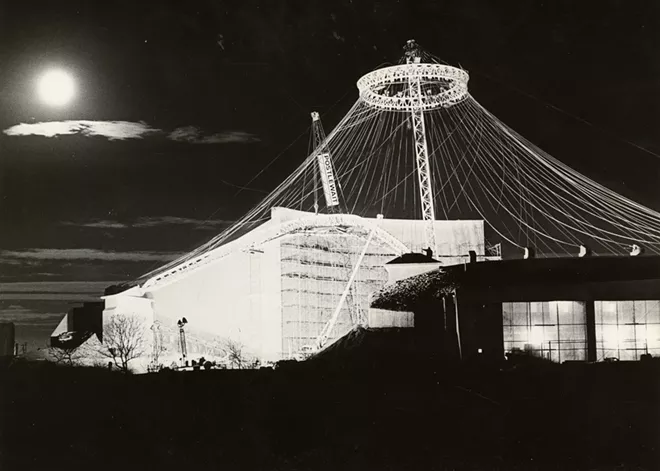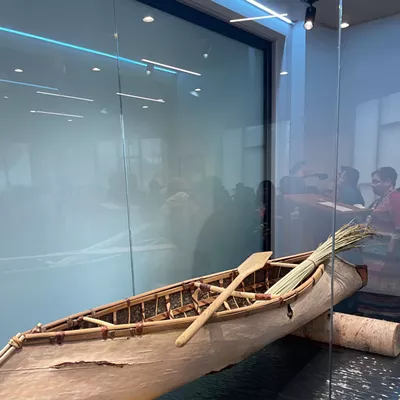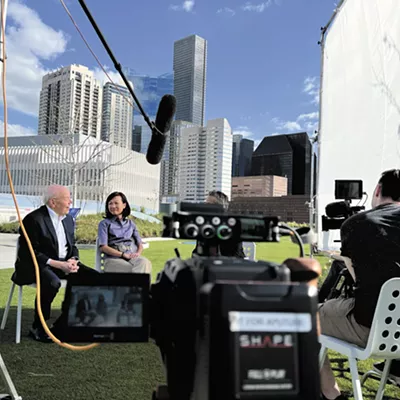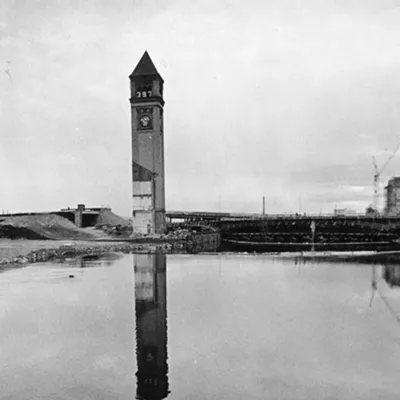
Here on the eve of its 50th anniversary, you could say there are not enough superlatives in the English language to do justice to the story of Expo '74.
♦ Spokane was the smallest city on Earth ever to host a world's fair.
♦ It hosted the first American fair ever to be held with the approval of the Bureau of International Expositions (BIE) in Paris.
♦ It was the first exposition in the United States since World War II to be held with Soviet participation.
♦ The BIE used Spokane's Expo to pioneer a new set of guidelines and regulations for conducting world's fairs.
♦ Held just two years after the first Earth Day, Expo '74 was the first fair with an environmental theme. Most expositions since 1974, including Shanghai's huge fair in 2010, have followed Spokane in adopting an environmental theme.
♦ Its landscape "residual" is one of the most impressive of any fair anywhere. A "residual" is what is left on the grounds after a fair is over. In the case of New York City, the location of their fair of 1963-64 is now the site of a pleasant park, Flushing Meadows, in the Bronx where the U.S. Open tennis tournament is held every year. Seattle's Century 21 expo left an equally pleasant park, Seattle Center, about a mile from downtown. In the case of Spokane's Expo '74, the landscape residual is also a pleasant park, and the most dramatic riverscape at the heart of any American city — Spokane Falls.
♦ And let's not forget the financial miracle of the exposition. With an investment of less than $5 million, Spokane benefited to the tune of more than $100 million in urban renewal. Pennies on the dollar! As Spokane Mayor David Rodgers remarked afterwards: "Reduced to its essentials, we gave a great big party and the rest of the world came and paid the bill."
To experience the benefits of Spokane's Expo '74 50 years later, one need only walk through Riverfront Park, the magnificent residual of the fair. Much has changed since 1974. The exposition buildings are gone, of course. And the United States pavilion, still standing, has been through several changes, including the installation recently of blinking lights, artistically arranged on the cables above the pavilion floor, where once a tent-like fabric enclosed the space. The German beer garden of the fair was transformed — as cleverly planned — into housing for one of the world's premier carousels; today, the Looff Carrousel is housed in a new building that came with recent park renovations.
In Riverfront Park you can still stand right where tourists stood 50 years ago and look at scenes that have stood the test of time. Near the Carrousel, the Garbage Goat with its environmental message still engages children and their parents.
Walk farther into the park and you witness the scene that most delighted visitors then as now — Spokane Falls. The footbridges across the river were constructed for the fair, and on Opening Day — May 4, 1974 — water thundered through the heart of Expo. Tourists sometimes asked guides how Spokane had managed to divert the river to this channel, little knowing that the opposite was the case. The river had, in essence, beckoned Expo to its banks.
John Van Der Zee, writing for The New York Times, was one of the visitors who was beguiled by the river. Any lover of Spokane's falls will be moved even today by Van Der Zee's heartfelt evocation of the falls, written 50 years ago.
"It is 88 degrees in Spokane, a record snowpack is melting in the mountains nearby and the Spokane River is thundering through the fairgrounds within a few feet of flood stage. Standing on one of the bridges between the exhibits, you can feel the spray of foaming white water... The day before, a body was fished from this river and four escaping convicts were pulled out of the rock-strewn current and returned, quaking with relief, to their cells.
Get ready, Spokane, because in about a month, the Expo 50 celebration will be kicking off with a big party from 3 to 9 pm in Riverfront Park on Saturday, May 4 — 50 years exactly from opening day in 1974. Stay tuned as there will be special Expo 50 events all the way through the Fourth of July; learn more at visitspokane.com/expo-50.
"Such a scene — a torrent of fishable, perhaps drinkable, mountain water pouring through a city of nearly 200,000 people — seems foreign, Swiss, perhaps," Van Der Zee continued. "The river is to Expo '74 what striking architecture has been to some of the famous world's fairs in the past. It is Expo's thematic realization, its most spectacular show and its greatest achievement."
Spokane's Expo '74 was recognized as a triumph in its time and to this day as well.
Some time ago, with four years of hard work and the help of some extraordinary research assistants, I wrote a big book about Expo, speaking and learning about its master builders including the visionary and charismatic King Cole. That said, one of the tales that remains fixed in my memory is a story told to me about everyday Spokanites by Bob Carriker. A history professor at Gonzaga University, Carriker managed the fair's Ford Pavilion in its early stages. He needed to set up a tepee in the exhibit.
The hides for the tent were available, but Carriker needed poles. He came to realize that "lodgepole pine" was more than a picturesque name. Carriker spotted a likely grove of trees outside Spokane and asked the landowner if he could cut about 15 poles. He offered to pay, but on hearing that the trees would be used at Expo, the owner insisted that Carriker take them free of charge.
"This was something he could do to contribute, Carriker told me. "Now he could bring his grandchildren to the Ford Motor Company exhibit, and there's a little bit of him and his land inside that exhibit."
In such ways, Expo '74 was the triumph of all the citizens of Spokane. ♦
Bill Youngs is a history professor at Eastern Washington University and the author of The Fair and the Falls, which is being republished by Gray Dog Press as a paperback to celebrate the 50th anniversary of the 1974 World's Fair in Spokane.





















